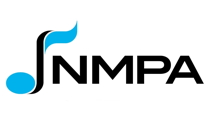This website uses cookies so that we can provide you with the best user experience possible. Cookie information is stored in your browser and performs functions such as recognising you when you return to our website and helping our team to understand which sections of the website you find most interesting and useful.
Business News Labels & Publishers
NMPA reveals value of US publishing sector, says copyright rules holding industry back
By Chris Cooke | Published on Thursday 12 June 2014
America’s National Music Publishers’ Association has estimated that the country’s music publishers generate about $2.2 billion in revenue each year, but that, people, is about half what they should be making because of “outdated copyright law and government regulations”. See, sometimes it’s the copyright owners saying copyright law isn’t fit for purpose in the digital age.
As previously reported, the big music publishers want to start negotiating the ‘public performance’ bit of their deals with the main streaming services directly, rather than using their collecting societies for such arrangements, because the minute you start dealing through the collective licensing system you open yourself up to extra rules and regs which, the publishers reckon, mean you make less money.
But in the US that plan has been scuppered by the courts, which says that under the ‘consent decrees’ signed by the music publishing sector’s main two collecting societies, ASCAP and BMI, the publishers can’t pull out of collecting society negotiated digital licenses while still using the collective licensing system for traditional radio and other public performance of their songs. The publishers reckon that’s because the ‘consent decrees’ are outdated, and the Department Of Justice has now pledged to review the way collective licensing is regulated in the US, where rules do seem particularly strict on this issue.
Though whether a shift to direct licensing of services like Pandora would really double the music publishers’ revenues is debatable. The NMPA says it based its estimates on the deals its big members had negotiated with iTunes Radio and Pandora before the courts forced the publishers to stick with collective licensing in the digital domain.
But Pandora et al might argue that there is a finite amount of money available, given most streaming services already pay the majority of their revenues to the music industry, and therefore any major increase in publisher payments would have to complemented with a reduction in the monies paid to the labels.
And, if pushed into a corner, the big music rights companies which own major record companies and publishing firms would prefer more money to come in via their labels, because labels usually have to share a lot less of the loot with their recording artists, compared to what cut of the money is paid by publishers to songwriters. But annnyyyyywayyyy.
NMPA boss David Israelite told reporters: “We are finally able to capture what the industry is worth and, more importantly, what our industry is losing. The new digital marketplace is changing how songwriters and their music publishing partners can thrive. As the marketplace evolves, it is essential our industry no longer be hamstrung by outdated laws and government regulation”.
The music publishers are generally less forthcoming with revenue stats than the record industry, and this is the first time the NMPA has issued figures of this kind, partly as a result of new data requirements being placed on its membership. The trade body also revealed that while just over half of its industry’s revenue comes from performance licensing, 23% comes from mechanical licensing (the publishers’ cut of record sales mainly) and 20% from sync.






